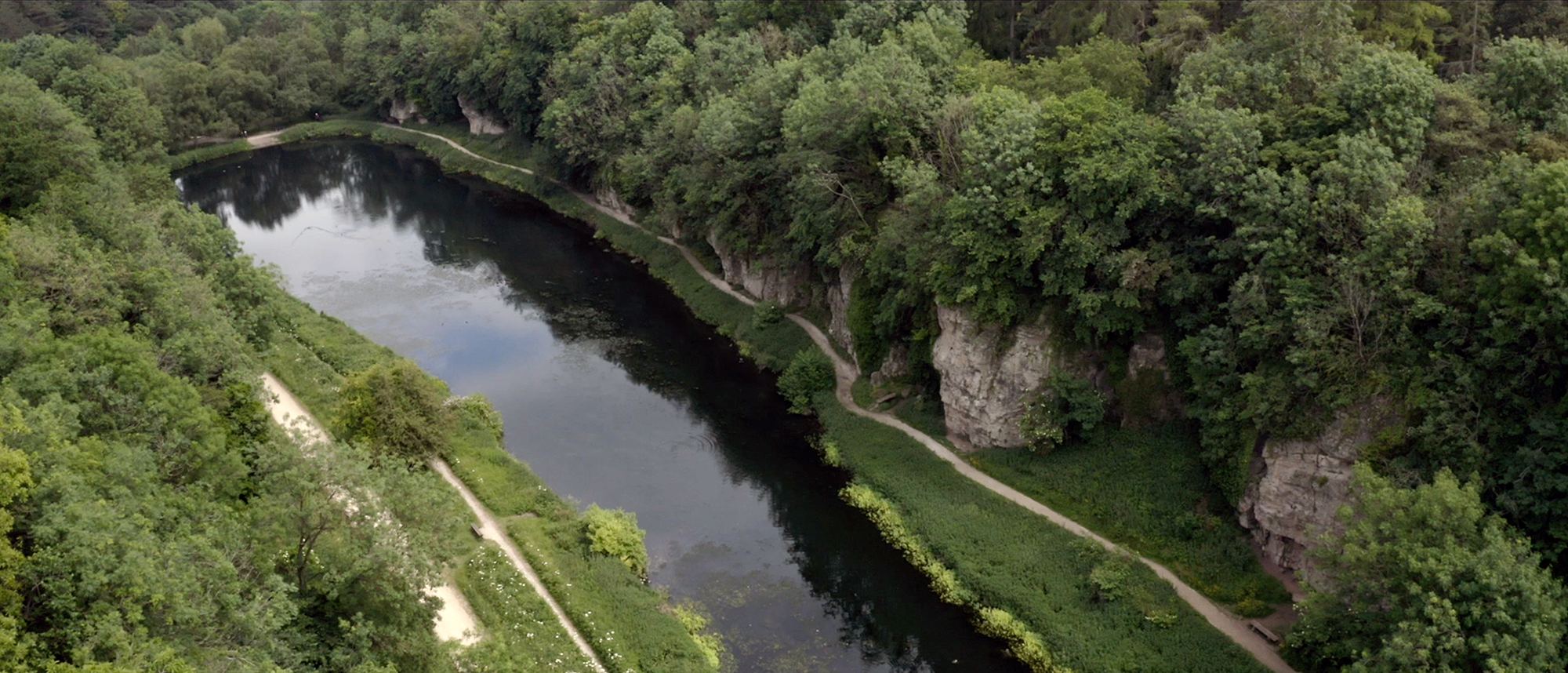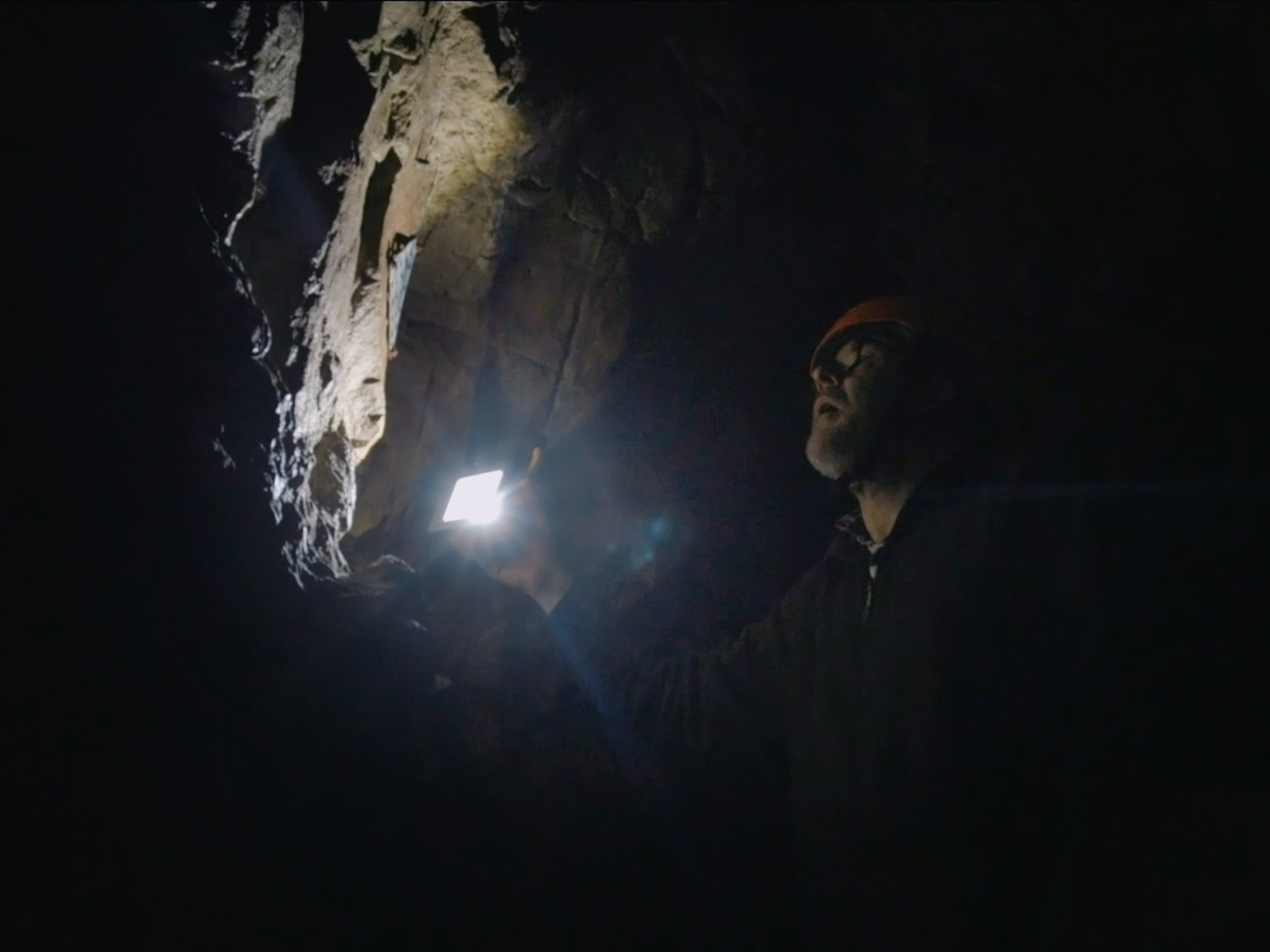




Creswell Crags, Nottinghamshire is one of the most important Upper Palaeolithic cave sites in the British Isles and has been the focus for archaeologists for over 170 years. Palaeolithic research within Creswell Crags has identified evidence for Early Modern Human occupation at what is considered to be the northernmost edge of the habitable world during the later Pleistocene [between 40,000 to 10,000 years ago] when average summer temperatures were around -10 centigrade and the landscape was much different to what it is today.
Church Hole Cave (once referred to as Fissure C or Nott’s Cave), located on the southern side of the Gorge was thoroughly explored by an Anglo-Spanish team who were prospecting for rock art. It was announced in 2003 that the first Late Upper Palaeolithic rock art had been discovered and included clear side-on engravings of red deer, bison and wild foul. The were also other lines and scratches that indicated the presence of modern humans that were roaming the landscape between 15,000 and 13,000 years ago. Fortunately, several of the engravings were covered by a flowstone (stalactite) which was dated using Uranium-Thorium dating techniques to provide a minimum date range.
In 2021, Research Fellow, Dr George Nash at the University of Liverpool explored the walls and ceilings of several caves within the Gorge, including Church Hole Cave and Robin Hood’s Cave. The results of this survey revealed a number of panels in Church Hole Cave that showed potential evidence of painted surfaces using a locally sourced red pigment (what is termed as applied haematite). Church Hole Cave and its neighbouring cave sites sit within a large limestone area and sweeping through these rocks are large spreads of secreted haematite. Sometimes, it is difficult to distinguish between the applied and secreted haematite. However, Dr Nash managed to identify eight panels where probable painted haematite was present, several of which were incorporated into the engravings that were discovered in 2003 and later dated by the University of Southampton. Unfortunately, several painted panels, discovered in 2021 were partially covered by flowstone. It is hoped soon that these and other panels can be sampled and dated (pending Scheduled Monument Consent and permission from Creswell Crags Museum and Heritage Centre).
As suggested earlier, it sometimes difficult to distinguish between natural and applied haematite. More difficult is to see faded painted surfaces with a naked eye. Dr Nash, using a tried and tested desk-based colour algorithm (known as Decorrelation-Stretch), initially scanned the cave walls for potential applied haematite spreads. These areas were photographed using strategic lighting and then enhanced using the Decorrelation-Stretch algorithm. The results from this survey have identified up to eight painted surfaces, all, the result of human agency. In addition to this survey, Dr Nash also scrutinised the cave walls to the rear of the cave where historic engraved graffiti was found. Interestingly, the cave appears to have been visited some 12 years prior to the first exploration of the cave in 1872 by quarry manager Frank Tebbet. The cave was scientifically explored a few years later by J.M. Mello during the summer of 1875. For both these explorers, the initial visit would have been a tight fit! As far as Dr Nash is aware, and as yet, there has been no research undertaken on the engraved graffiti, some of which may date before 1860.
Accompanying Dr Nash were filmmakers, Richard Suckling and Elizabeth Poraj-Wilczynska of Cave Bear Films (www.cavebearfilms.com), who filmed the cave survey and its results over a two-day period (Cave Bear Films is also responsible for other films associated with Creswell Crags). The result of their work is a well-crafted and informative account of exploring caves for painted rock art – entitled Painting the Past. This 12-minute HD film, captures the atmosphere of the inner sanctum of the cave, its landscape setting and anticipation of discovery of potential ancient painted art. The film can be viewed via the Bradshaw Foundation website, at: https://www.bradshawfoundation.com/painting_the_past, with links to the Creswell Crags Museum and Heritage Centre (at: https://www.creswell-crags.org.uk/).
Following the uploading of the Colouring the Past film, Dr Nash stated that this footage provides a unique insight into exploring caves for ancient rock art. By the nature of their profession, archaeologists tend to look down at the ground when looking for evidence of the past, but rock art specialists look to their left and right and above them to make sense of the symbolic and ritual past, as expressed in the artistic endeavour of our early ancestors.
It is a pleasure to continue our collaboration with Dr. George Nash, Associate Professor at the University of Coimbra in Portugal and a Research Fellow within the Department of Archaeology, Classics and Egyptology, University of Liverpool and a member of the Rock Art Network and a member of the First Art Team, based on his research as an archaeologist and rock art specialist both around the world and here in the British Isles.
This latest endeavour, in association with filmmakers Richard Suckling and Elizabeth Poraj-Wilczynska of Cave Bear Films, throws new light on one of the most important Palaeolithic sites in the British Isles; Creswell Crags in Nottinghamshire has, after all, caught the attention of archaeologists for some 170 years, revealing lithic tools, carved bone and rock art engravings.
Now, we consider new discoveries by Dr Nash, who analyses the haematite on various panels - distinguishing between its applied and secreted presence - and the implications this has regarding the members of a hunter-gatherer society in what is considered to be the northernmost edge of the habitable world during the later Pleistocene.















